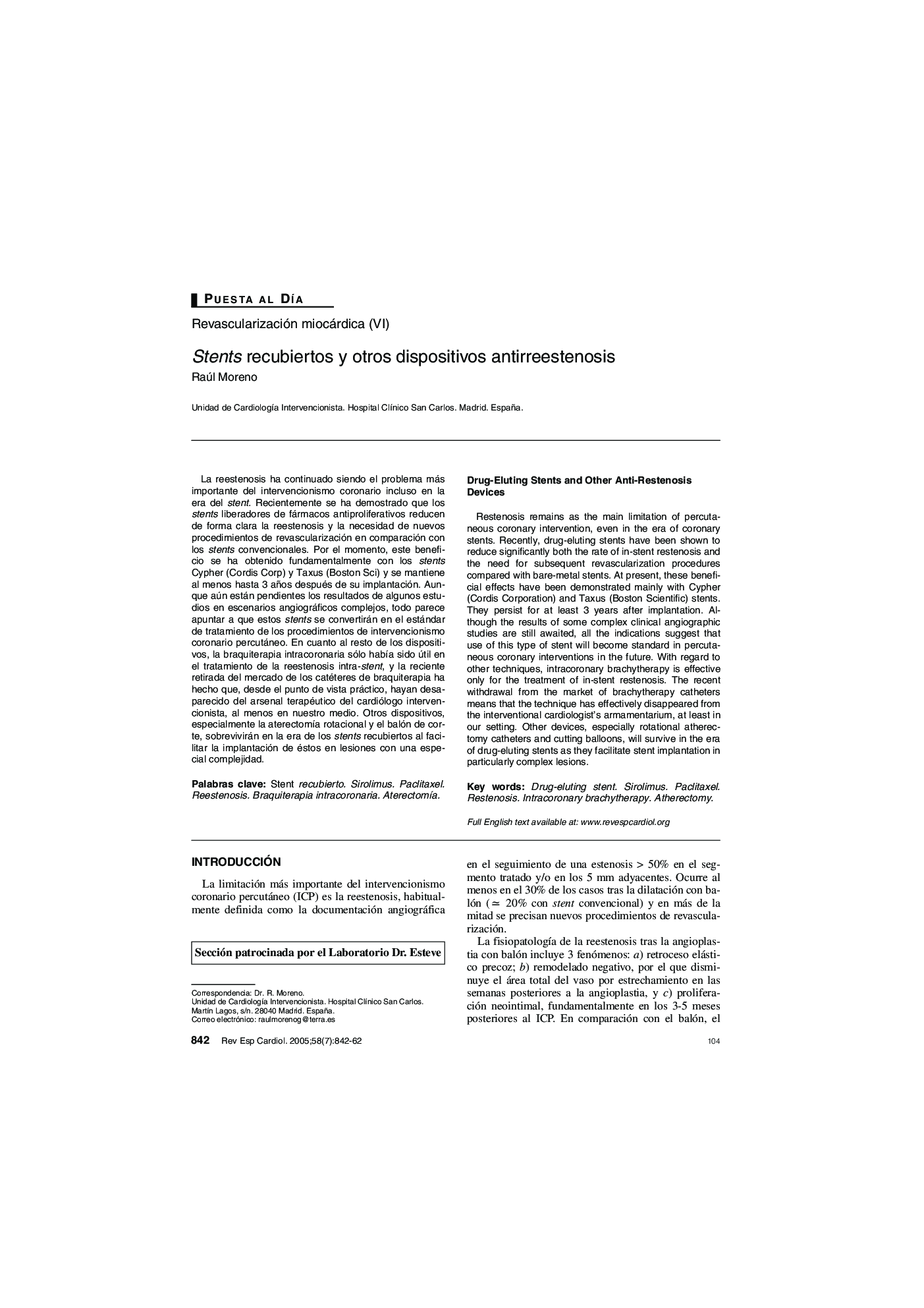| Article ID | Journal | Published Year | Pages | File Type |
|---|---|---|---|---|
| 9181568 | Revista Española de Cardiología | 2005 | 21 Pages |
Abstract
Restenosis remains as the main limitation of percutaneous coronary intervention, even in the era of coronary stents. Recently, drug-eluting stents have been shown to reduce significantly both the rate of in-stent restenosis and the need for subsequent revascularization procedures compared with bare-metal stents. At present, these beneficial effects have been demonstrated mainly with Cypher (Cordis Corporation) and Taxus (Boston Scientific) stents. They persist for at least 3 years after implantation. Although the results of some complex clinical angiographic studies are still awaited, all the indications suggest that use of this type of stent will become standard in percutaneous coronary interventions in the future. With regard to other techniques, intracoronary brachytherapy is effective only for the treatment of in-stent restenosis. The recent withdrawal from the market of brachytherapy catheters means that the technique has effectively disappeared from the interventional cardiologist's armamentarium, at least in our setting. Other devices, especially rotational atherectomy catheters and cutting balloons, will survive in the era of drug-eluting stents as they facilitate stent implantation in particularly complex lesions.
Keywords
Related Topics
Health Sciences
Medicine and Dentistry
Cardiology and Cardiovascular Medicine
Authors
Raúl Moreno,
